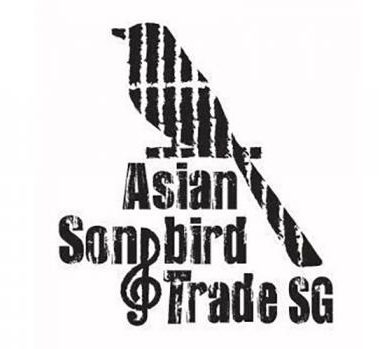The dramatic crash in songbird populations brings together a group of experts committed to ensuring that Southeast Asian forests remain filled with birdsong for decades to come.
The sad plight of songbirds
The songbird trade has caused massive declines in many species in the region. Because of it, ASAP bird species such as the Rufous-fronted Laughingthrush Garrulax rufifrons, Straw-headed Bulbul Pycnonotus zeylanicus and Javan Green Magpie Cissa thalassina have disappeared in many of their old haunts.
 The Javan Green Magpie has practically vanished from the wild as a result of the bird trade
The Javan Green Magpie has practically vanished from the wild as a result of the bird trade
© Chester Zoo
Birdkeeping has a long history in Indonesian (particularly Javanese) culture. The increasing wealth and the prestige associated with owning rare species have combined to create a situation where demand for wild songbirds is much greater than sustainable harvest rates. This has resulted in the population crashes of many once-abundant species.
 Once common and widespread in the rice fields of western Java, the Black-winged Myna Acridotheres melanopterus is now dependent on conservation efforts to survive.
Once common and widespread in the rice fields of western Java, the Black-winged Myna Acridotheres melanopterus is now dependent on conservation efforts to survive.
© Anaïs Tritto
The situation is especially dire due to the archipelagic nature of the region, restricting the global ranges of many species to single, small islands – increasing the risk of extinction for these species.
Addressing the unknown
Untangling the complex sociological, economic and biological factors that structure the trade is the key to developing strategies to manage it. These were the reasons behind the formation of the Asian Songbird Trade Specialist Group (ASTSG) under the auspices of the IUCN Species Survival Commission (IUCN SSC) in May 2017 which convened for the first time at a three-day meeting held at the Jurong Bird Park, Singapore from the 30th March to 1st April 2019.
Over 50 experts from across the globe gathered to evaluate progress over the last two years and to chart future actions in the conservation of traded songbirds in Southeast Asia.
A coordinated approach, in line with the Conservation Strategy for the Southeast Asian Songbirds in Trade, is required to tackle the issue of the illegal and unsustainable songbird trade, which is also strongly linked to social, economic and cultural practices in the region.
 The Nias Hill Myna Gracula robusta, restricted to three small islands, is particularly sought after for its loud voice and affinity for imitating sounds from its environment
The Nias Hill Myna Gracula robusta, restricted to three small islands, is particularly sought after for its loud voice and affinity for imitating sounds from its environment
© Gwee Chyiyin
Five thematic sub-groups have since developed and they are focused on: 1) field research; 2) genetic research; 3) trade, legislation and enforcement; 4) conservation breeding and reintroductions; and 5) community engagement, communication and education. The group also brainstormed on cross-cutting actions – such as demand reduction that spanned multiple themes.
Future plans & priorities
 Asian Songbird Trade Specialist Group meeting 2019 © Jessica Lee
Asian Songbird Trade Specialist Group meeting 2019 © Jessica Lee
While the trade is still prevalent in Indonesia, this meeting saw the increasing need to focus on other markets in the region, as well as those beyond Asia. The growing and constantly shifting demand of the songbird trade has also put  more species at risk. The priority list of birds has increased to 44 species (9 of which are ASAP species), when compared to the list of 28 species identified four years ago.
more species at risk. The priority list of birds has increased to 44 species (9 of which are ASAP species), when compared to the list of 28 species identified four years ago.
Preventing the ongoing songbird extinction crisis continues to be a concerted effort; encompassing efforts to change behavioural patterns and mindsets, to habitat protection programs. The ASTSG, hosted by Wildlife Reserves Singapore, hopes to continue the fight, implementing solutions that will reverse the declines of songbird populations in the wild.
Featured image Javan Green Magpie © Cikananga Conservation Breeding Centre

